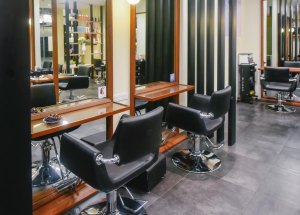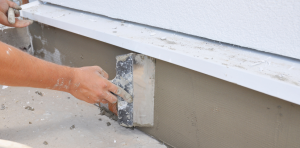A great curly hair salon can make all the difference for your curls. It is important to find a stylist that has experience with your specific type of curls and uses quality products for curly hair.
This Harlem beauty salon specializes in air-drying your hair with little to no heat, so your curls will have more volume and less frizz. They also offer a variety of treatments and styling options for your mane. Click the Curly Hair Salon San Francisco to learn more.

Fox & Jane is a modern hair salon in New York that offers a wide range of services for men and women. Their stylists are knowledgeable about the many different types of curls and can help you achieve the look that you desire. Their team also teaches you how to maintain your curly hair at home so that it stays healthy and beautiful.
Whether you want to add volume or give your curls a sleeker shape, this salon will leave you with a beautiful and natural look. They offer several types of haircuts and styling options, as well as color services. Additionally, they have a number of products that are specifically designed for curly hair. This is a great place to go if you’re new to curls.
This salon in Manhattan is the epitome of a curly-friendly establishment. Their stylists have years of experience working with curly hair and can give you the perfect cut to complement your natural style. They also use the latest techniques to ensure that your curls stay healthy and moisturized.
The founders of this salon believe that all people deserve to have a beautiful head of curls. They work hard to make sure that all clients are happy with their services and that they receive the best possible care. They are passionate about creating a space where every idea is valued and everyone can learn from one another.
Another great option for curly hair is Ever Green Curls in Scarsdale, NY. This salon is a certified sustainable salon and uses clean, organic products. They also recycle all hair clippings to prevent waste and are a member of Green Circle Salons. This organization puts the hair clippings to good use, including using them for humanitarian products.
When you visit this salon, you’ll be greeted by the friendly staff and will find that they offer a wide variety of services. From a basic wash and cut to a full service hair appointment, they will be sure to exceed your expectations. Their stylists are knowledgeable about all aspects of curls and will be happy to answer any questions that you may have.
Mizu Salon
Mizu is a beautiful new salon located at 505 Park Avenue in NYC. It offers relaxing lounging areas, private workstations and a wide selection of nutrient-rich hair care products. It also has a menu of luxurious services such as haircuts, blowouts, color and balayage. The staff is highly trained, and their focus is on making sure every client leaves feeling great about themselves. They use only the highest quality of ingredients in all their hair treatments and offer an extensive range of styles to suit any lifestyle or mood.
Owner Carla Yamanaka has chosen the name mizu as a symbol of the elements water, balance and harmony. Water is nature’s most powerful element, representing the feminine, the psyche, and intuition. It is fluid and changing, adapting to its environment. The salon itself has a Japanese design and is inspired by the elements of water.
Amy has a natural ability to tame, shape and sculpt curly hair into its most healthy and lustrous form. Her tenacity and strong work ethic has accelerated her to the top of the senior stylist ranks. She is a huge believer in pursuing education and attends many hands-on classes on a regular basis, including Aveda, Oway, Keratin Complex, and various combinations of extension application and management.
Ouidad Salon
Located just steps away from Broadway’s frenetic theater district, Ouidad Salon is a haven for anyone with curly hair. Ouidad, the salon’s founder, has dedicated her life to celebrating, studying, and caring for curls, and her patented Carving & Slicing technique is known around the world as a highly effective cut for curly hair. In addition to being a highly sought-after stylist, Ouidad also teaches her techniques at her certified salons across the country and internationally.
The Ouidad salon in Flatiron, NYC, is the flagship location where they showcase their customized approach to curl care. They offer a wide range of services, including cutting techniques, heat-activated treatments, and styling techniques for all curl types. Their 4,000 square-foot space offers 13 stations, six hooded chairs for color processing, and an extensive menu of services for clients.
If you have curly hair, you know that it can often become flat and tangled very easily. You may spend a half-hour curling your hair, only to see it become flat by the end of the day. The Ouidad salon can help you avoid this by giving your hair multiple layers that will accentuate your natural curls. The Ouidad cut is done while your hair is wet, which helps prevent knots and tangles from forming.
To learn more about Ouidad, visit their website. They also offer a virtual education program, called “The Curl Lab”, which is designed for stylists that want to gain more confidence in serving their curly clients. The class teaches stylists about the products and techniques used in Ouidad’s curly hair salons. It also covers the basics of curl optimization and provides live demonstrations of the Rake & Shake Styling Methodology.
Spiral
Full Spiral Salon is the brainchild of Christin Brown, a curly hair expert with more than 18 years of experience. This salon is all about empowering clients by showing them how to care for their curls from home and offering a curated collection of products that cater to every type of texture. Christin believes that everyone deserves a personalized look that accentuates their natural beauty, so she encourages clients to bring in photos of their favorite celebrities with similar curl patterns to help guide her.
The team of stylists at this salon are experts at working with all types of hair, including curly hair. The salon uses the latest techniques and precision cutting to give each client a custom look that suits their curl pattern. They also offer color and styling services that work with your curls to create beautiful, long-lasting results.
Unlike elastics, which can pull and damage your hair, spirals distribute pressure evenly so that your strands stay healthy and smooth. They also don’t leave creases or ponytail dents, and are easy to remove without any fuss. Plus, they’re available in a variety of colors and sizes, so you can find the perfect match for your style.
Spirals are great for creating a secure and flattering bun, messy half-up braid or high ponytail. They’re also ideal for reducing the friction that can cause split ends, so they’re perfect for people with fine or thin hair. And because they’re made of high-quality materials like silicone or phone cord fabric, they can withstand daily wear and tear.
This Harlem-based salon is a curly hair oasis. They’re committed to caring for your curls and coils, and their licensed stylists are trained in the Mona Cut dry cutting technique. The salon also offers curl-friendly coloring services, such as free-hand painting that follows your hair’s natural movement and shape to ensure seamless blends. Plus, they use all-natural hair products infused with curly-friendly botanicals.







